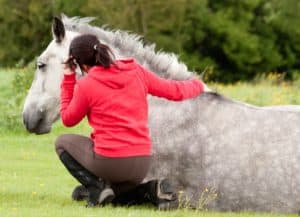
Horse Bandaging Fundamentals
There are right and wrong ways to bandage horses’ limbs, no matter the wrap’s purpose.

There are right and wrong ways to bandage horses’ limbs, no matter the wrap’s purpose.

When a horse’s healing process gets derailed, wounds can become chronic. Here’s how to prevent complications.

Lumps, bumps, coughs, wheals, and wheezes: a basic overview of equine allergies.

Horses with conditions such as muscle or metabolic disease might have special hay needs to stay healthy.

Dr. Christy Corp-Minamiji discusses what you can do to build a safe stall or make an existing stall safer.

Learn how to right a recumbent horse and what factors influence his survival.

There is no one ideal body type; there are, however, conformation traits that can affect performance across the species.

Here’s a rundown on our arsenal of equine disease-fighting drugs and their proper uses.

A behind-the-scenes look at how your horse’s immune system is best primed for battle.

Researchers are always working to determine which deviations from the norm are performance-limiting.

Learn about common foot pathologies and corrective-shoeing options, from bar shoes to wooden clogs.

Addressing the anatomy, conformation, and biomechanical principles of the equine foot.

Find out what the equine genome can tell us about our horses and preventing genetic disease.

As pigeon fever spreads across the United States, so does information—and misinformation—about it. Here we’ll take a look at the true causes, treatments, and outcomes.

This technique, which a team of scientists recently found to be successful, could make ICSI more affordable by only necessitating one mare as opposed to two for each procedure.

Drug compounding seems to hit the news every few years. What’s the big deal?
Stay on top of the most recent Horse Health news with